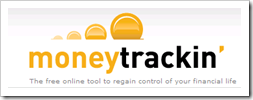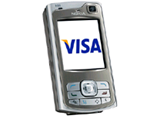Article updated at 2 PM Pacific with quote from one of Zopa’s partner CUs, Affinity Plus.
 Zopa’s U.S. social deposit/lending site will be shuttered, just 10 months after its launch (see previous coverage here). The site, which delivered loan applications and CD customers to six credit union partners, apparently was closed by Zopa. At this point the exact reason is unclear (see update below). Zopa blamed the U.S. credit situation and said it wanted to concentrate its efforts in other markets.
Zopa’s U.S. social deposit/lending site will be shuttered, just 10 months after its launch (see previous coverage here). The site, which delivered loan applications and CD customers to six credit union partners, apparently was closed by Zopa. At this point the exact reason is unclear (see update below). Zopa blamed the U.S. credit situation and said it wanted to concentrate its efforts in other markets.
Here’s part of the statement from CEO Doug Dolton that appeared on the Zopa forum earlier today (also here’s the official blog entry at Zopa UK):
The facts are: Due to the extremely difficult consumer credit circumstances in the US, we made the decision to focus our ongoing efforts in the UK, Italy and Japan. We have six credit union partners in the US, and we have been working with them to modify our business model to offer our customers the best possible offerings, given the poor credit conditions in the US.
We’re certainly facing unprecedented economic times worldwide right now, but I am pleased to report that our UK and Italian operations are doing better than ever, and I look forward to continuing to develop those marketplaces. I apologise for any confusion regarding our circumstances.
As of this morning, the Zopa US homepage is unchanged, but you can no longer sign up as a new member and all the Learn More links redirect to USA Federal Credit Union.
Implications
It’s surprising that the company would throw in the towel on the significant investment it made here. However, if Zopa’s CU lending partners had curtailed, or stopped, making loans through the site, something noticed last week by the Prosper Lending Review blog, the whole strategy would no longer be viable (see update below).
But this has nothing to do with what Prosper, Loanio (which launched last week) and hopefully Lending Club (expected be accepting new lenders shortly) are doing with person-to-person lending. Zopa US, unlike Zopa UK, was NOT a P2P lending site, it was a lead-generation site for six credit unions. When those CUs stopped needing loan-leads due to the credit crunch, it took the legs out from under the U.S. division. Even continuing to just take deposits made no sense, since each depositor was required to assist a borrower by gifting a portion of the deposit interest.
We wouldn’t be surprised to see Zopa back in United States in the future as a true P2P lending site, copying the model of its U.K. and Italian divisions. The social aspect of its offering certainly resonated with consumers and industry players as well. The company was one of four Best of Show winners in our April Finovate Startup conference, an award by majority vote from the audience (video here).
For more information, see our Online Banking Report on Person-to-Person Lending. And those attending our Finovate next week will see two companies demo P2P lending.
Update: 2 PM PDT, 9 Oct 2008
As one of the credit unions who were partnered with Zopa, I would like to clarify that we have no credit availability issues and have changed none of our lending practices. This decision was made by Zopa.
— Sarah Mason, SVP, Affinity Plus Credit Union






















